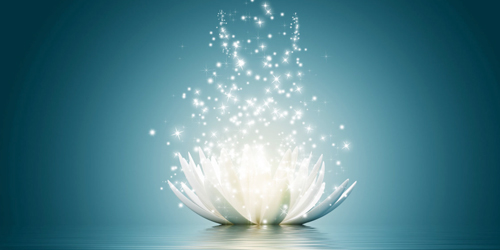It has been estimated (2021) that there are circa 170,000,000 unique books in the world1 and yet there is no author and no single book that can authoritatively tell us how to live a perfect life. There are many acclaimed self-help writers, who can advise and inspire, but the idea of a perfect life is often so intensely subjective that it requires us to embark on a journey of deep self-reflection.
The truth is, I cannot tell you how to live a perfect life; no one can. I can only share my own experience of what it means to have lived half-a-life, and what it means to live freely.
For many years, I was gripped by a compulsion to control situations and strive for flawlessness. In other words, I was a perfectionist. Externally, it seemed as though a perfect life was being led, and at times, I convinced myself this was the case. Truthfully, I was creating impossible standards that weaved an elaborate web of anxiety, stress and fear. This clouded every decision I made and shaped my responses to people and situations.
Exploring this topic has, therefore, presented an opportunity for introspection on my part. After all, we must ask ourselves, is life something to be perfected? If so, by what and whose standard do we measure its perfection? There are many generational, cultural and social understandings of what it means to lead a perfect life. At the micro level, our lives are largely shaped by our peers, family and friends. Adhering to such social norms may be acceptable, but can we truly describe meeting these expectations to be the bedrock of a perfect life?
A Perfect Life?
If we were to imagine a perfect life, how would it look? How would it feel? In my younger years, I envisaged a future self that would be accomplished, successful, loving, and healthy. I held on to this image for dear life, as though it were a safety blanket. It was only as I matured that I realised life was infinitely more complex and vibrant than I had dared to imagine. I realised that life is not a static canvas with one perfect painting etched upon it. Rather life is more nuanced and layered, inviting us to create and destroy many such images, as our depth and understanding grows. Life is what happens to us, whilst we are waiting to live!
I realised that I had fallen into the trap of chasing a perfect life, assuming it was some place to be reached, some day. In that illusory and imaginary place, I assumed I would arrive at one version, one way of being fulfilled. I completely overlooked the time and presence available to me now – my musings were only wishful solutions for the lack I felt deep within.
In those years, I experienced a disconnection. After all, how could I expect to build the foundation of a perfect life with cracks in the mortar? I had been trying to build my own idea of a perfect life with an imperfect mind-set. If I were to juice an orange, logic demands that only orange juice would reasonably be produced. Similarly, if our mind-set is still caught in a cycle of negativity, how can we expect to create a positive lifestyle? How can we create meaningful impact when we are still in survival mode? Perfection, then, begins and ends with the mind.
Perfecting the Mind
Whenever I see a space in the house, I like to fill it with books or ornaments that create a pleasing aesthetic. The unenlightened mind works like this too. Whenever there is a space in the mind, we find ourselves overwhelmed with thought-seeking to fill the gap. A sense of restlessness prevails and it is difficult to imagine anything close to perfection emanating in this environment.
But this gap is precious. The gap is the space where the idea of who we are, is not. And where we are not, is where perfection is! As long as we are seeking perfection, we will never know perfection. It is the idea, the concept, the notion of perfection that we have, which must be dropped. This is how Osho (Bhagwan Rajneesh) once put it:
A Sufi master was sharing his wisdom with a group of people. He repeated an old Sufi saying, life is perfect, everything is perfect; everybody is perfect. An elderly man, who had been listening to the conversation, stood up. The man, who had a hunched back, said to the Sufi master, “Look at me. I am living proof that life is not perfect and that your idea of life being perfect is wrong. All my life I have been called a hunchback. Look at my disfigurement and tell me that life is perfect”. The Sufi master looked at him kindly and said: “But you are the most perfect hunchback I have ever seen!” 2.
This story reminds us that it is the standard of perfection that is imperfect, for this stems from the ego. We must drop the idea that perfection is to be attained and recognise the perfection that already is. As long as the mind is chasing smoke, it can never know the eternal flame of Truth.
The Perfect Truth
The Satguru has given us the tools of Seva, Simran and Satsang with which to build the foundation for a perfect life. It is with her grace that all the emptiness becomes full, and the incomplete becomes complete. The Upanishads describe it as follows:
All this is full. All that is full.
From fullness, fullness comes.
When fullness is taken from fullness,
Fullness still remains3.
A perfect life, therefore, does not require us to live perfectly. It only requires us to recognise the True Self through the Brahm Gyan. To live in this loving awareness is more than just to know perfection, it is to BE PERFECTION. And what could be more perfect than this?
– Serena Nagha, London, UK








